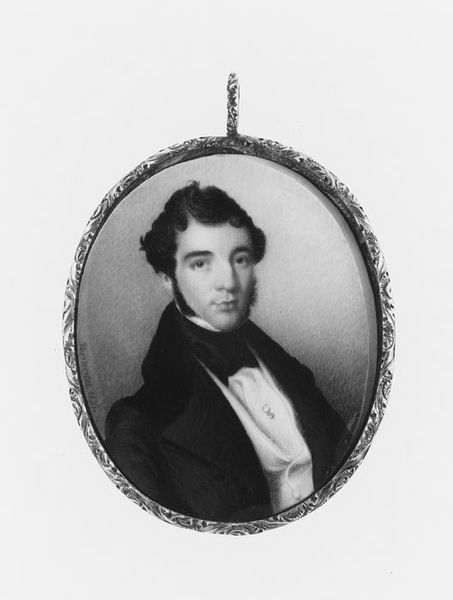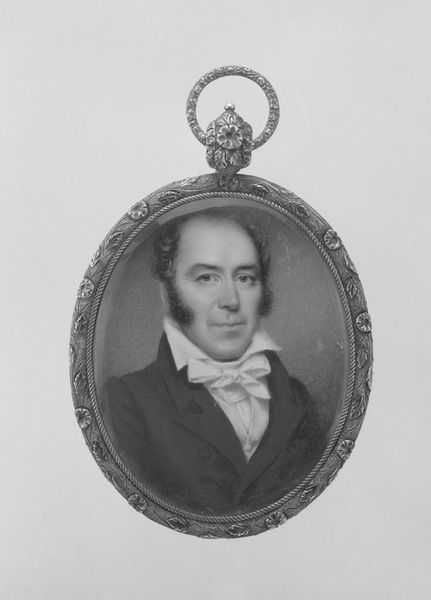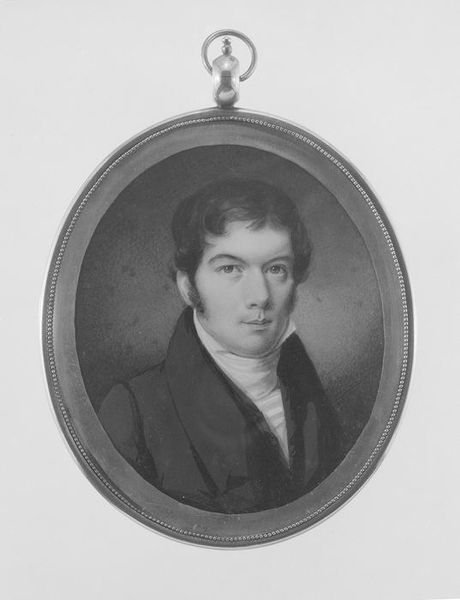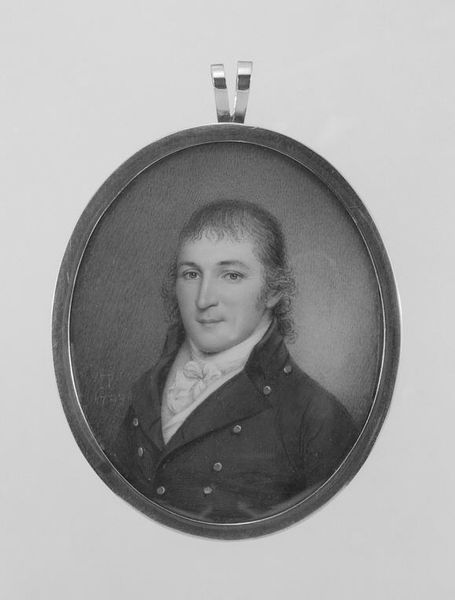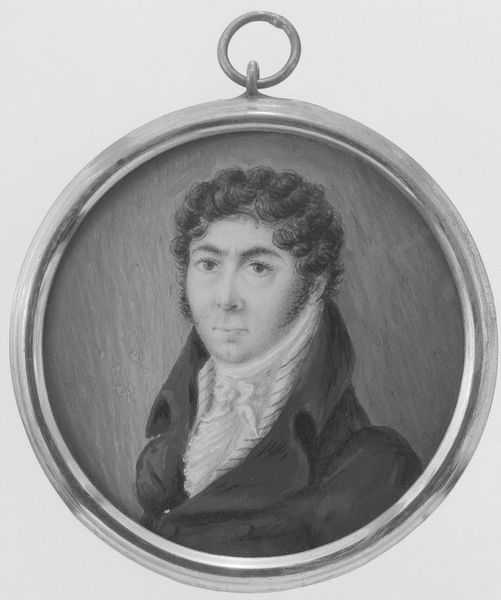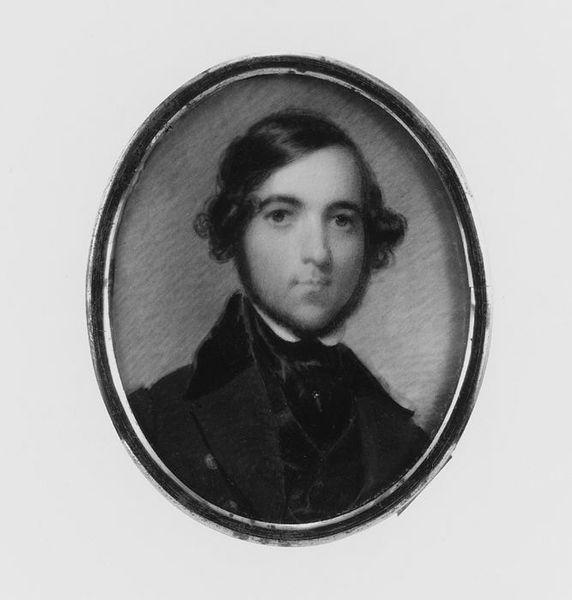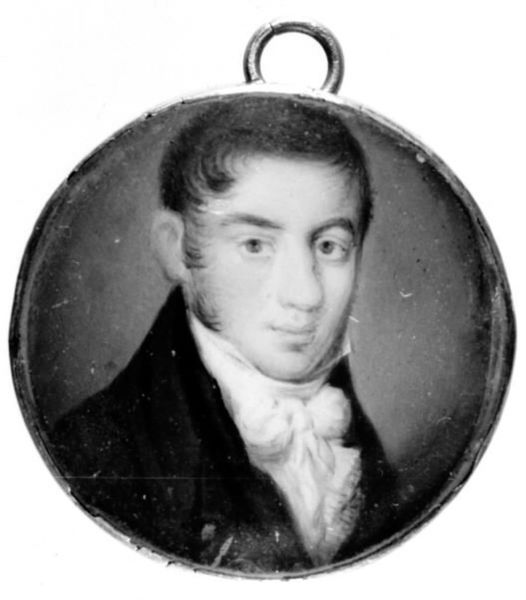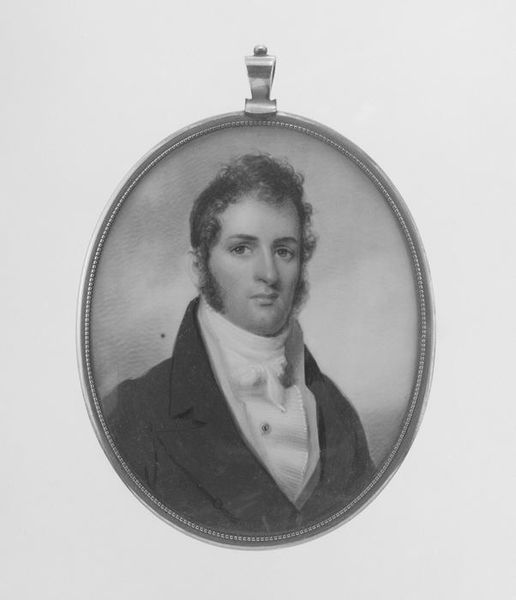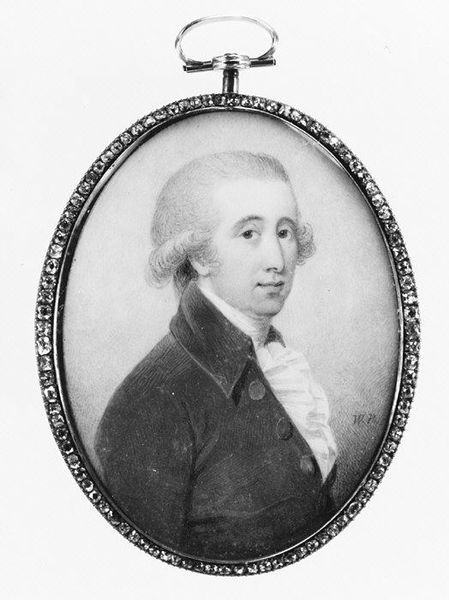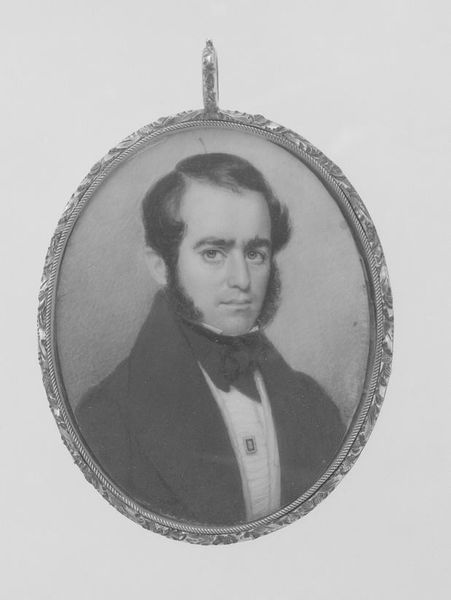
Portrait of a Man, Said to Be Mr. De Wolf 1800 - 1810
0:00
0:00
oil-paint
#
portrait
#
portrait
#
oil-paint
#
figuration
#
romanticism
#
miniature
Dimensions: Oval, 3 1/4 x 2 1/2 in. (81 x 62 mm)
Copyright: Public Domain
Curator: Before us we have "Portrait of a Man, Said to Be Mr. De Wolf," a miniature by George Engleheart, dating from 1800 to 1810. Editor: It has a rather haunting quality, wouldn’t you say? There’s something so self-contained about the sitter's expression, framed as he is within that tight oval. Curator: Indeed. Engleheart, as a portraitist, captured a very specific type of gentry class. Look closely; we're seeing the emergence of a more democratized image of power. Mr. De Wolf—if it is indeed him—is not posed heroically. Editor: No, the composition is remarkably restrained. Note the subdued palette, almost monochromatic save for the delicate rendering of skin tones and that frothy white cravat. And how that starkness isolates his gaze. It demands your full attention. Curator: And yet, who was he, really? De Wolf was part of a merchant family deeply entrenched in the transatlantic slave trade. Knowing this colors the emotional interpretation significantly. Editor: It does change how we view this image. Still, considered formalistically, that darkness allows him to come forward—pushing against constraints both visually and figuratively. It almost presents us with his social position. Curator: The miniature as a format was inherently about intimacy and class. Someone of means could afford to have it painted. It spoke to lineage and belonging in spaces that other members could engage in the conversation of that family’s belonging. How they chose to present themselves. Editor: To me, the appeal lies in Engleheart's compositional skill, balancing precision with this very modern-feeling simplicity. It is hard to not be pulled into that stillness he is embodying. Curator: Portraits like this serve as important records, although they are inherently coded in class, it's clear that De Wolf did not face systemic challenges, even in something that could be seen as minor. Editor: A haunting simplicity, then, becomes rather complex when explored through time, and in light of all that has passed. Curator: Exactly. These details ask us to consider all perspectives within it, that help make this miniature much more complex than we expect on first view.
Comments
No comments
Be the first to comment and join the conversation on the ultimate creative platform.
